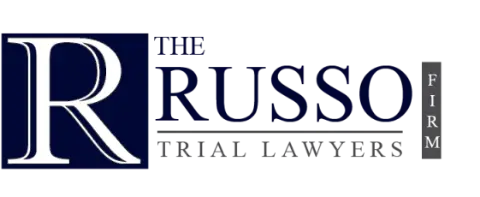One of the most dangerous types of car collisions is a head-on collision. This is when one motorist drives directly into the front of another car, exposing the driver and front-seat passenger to direct blunt-force trauma.
Head-on collision victims can receive a direct blow from a car going at a fast speed, exposing them to the risk of severe injuries like facial injuries, broken bones, and whiplash. The most common cause of a head-on collision is reckless driving behavior, such as distracted driving, speeding, and drunk driving.
Another cause can be when a driver loses control of their vehicle and accidentally strikes the front of another car because of defective car parts. If you suffered a head-on car collision, you should contact a car accident attorney to help you determine who can be held liable and what damages you could pursue compensation for.
Where Can Head-On Car Collisions Occur?
Drivers must stay wary of experiencing car accidents everywhere on the road. However, there are certain locations where a head-on collision can occur. Remember that a head-on collision involves driving directly into the front of another car, meaning some locations are more likely than others.
An undivided two-lane road is the most likely place for a head-on collision. Some drivers may lose focus or ignore where they’re going and drift into another lane. Without lane markings, a driver may drive directly into a driver moving in the opposite direction.
Head-on collisions can also happen on bridges, especially at night when the visibility of other cars is much lower. Drivers must also be wary of reckless drivers at intersections who can run red lights and drive directly into the front of their cars.
Distracted Driving Can Cause a Head-On Car Accident
Most head-on collisions result from reckless driving behaviors that involve a driver breaking road rules or losing focus. One such example of that is distracted driving, which is when a driver does not focus on driving safely and takes their eyes or attention away from the road.
When a driver is distracted, they can lose control of their vehicle. This can cause them to drift into another lane or fail to stop at a stop sign or red light. If a distracted driver drifts into another lane, they can crash into the front of another car in a lane going the opposite direction.
Three types of distractions can occur while driving: manual, visual, or cognitive. These distractions can lead to a driver’s taking their hands off the wheel, eyes off the road, or attention away from driving safely. Without a full focus on driving, motorists may miss another car coming at them or move toward the front of another car, possibly causing a head-on collision.
The following are some distractions behind the wheel that can lead to a head-on collision:
- Eating or drinking
- Using their phone to text, make phone calls, send e-mail, or use social media
- Putting on makeup
- Paying too close of attention to a GPS
- Having an intense conversation with someone in the car
- Looking out the side window at something other than the road
- Thinking about something other than driving
Head-On Collisions Caused by Drunk Driving
Another negligent driving behavior that can lead a driver to cause a head-on collision is drunk driving. People who go out for a night of fun with their friends must know who is driving home, as driving above the legal drinking limit can lead to a car accident.
When someone is inebriated from alcohol or drugs, they can experience many negative cognitive effects, such as bad vision, poor decision-making, and worsened muscle coordination. With these negative effects, a drunk driver may drive directly into the front of another car.
Drunk drivers can have poor judgment that leads to them drifting into a lane going the opposite direction. They can cause a head-on collision that results in severe car accident injuries, such as whiplash, bone fractures, and traumatic brain injuries (TBIs).
Speeding Can Cause a Head-On Car Collision
Drivers that go too fast can also cause head-on collisions. Speeding can lead to a driver losing control of their vehicle, causing them to move into a lane going in the opposite direction. Speeding directly into the front of another car can cause a severe head-on collision that causes severe injuries with long-term pain and suffering.
A speeding driver may also run a red light or stop sign that they need to pay attention to in order to prevent an accident. Without making a necessary stop, they can run through an intersection and collide directly with the front of another driver’s car, leading to them experiencing blunt-force trauma.
Defective Car Parts Can Contribute to a Head-On Car Collision
Head-on collisions do not always result from the negligence of a driver, as their car may have defective car parts that cause them to lose control of the vehicle. This can result in the car swerving all over the road and crashing directly into the front of another driver.
In this case, the designer, manufacturer, distributor, or seller of the car part could be held liable for damages. They caused the head-on accident by designing, manufacturing, or selling a car part with a defect that made it impossible for the driver to control the car.
Their negligence had a direct impact on the head-on collision. The head-on collision victim can file a car accident claim to hold them accountable for medical bills, lost wages, and loss of enjoyment of life.
Contact The Russo Firm for Help With Your Car Accident Claim
The experienced car accident attorneys at The Russo Firm can help you pursue compensation for car accident damages. They can use their vast experience, expertise, and resources to help you through the claims process and put you in the best position for success.
Our car accident lawyers can help by calculating your damages, determining the at-fault party, gathering evidence, and negotiating an insurance settlement. Contact us for a free head-on car accident consultation at (561) 270-0913 or leave a message on our online contact page.

